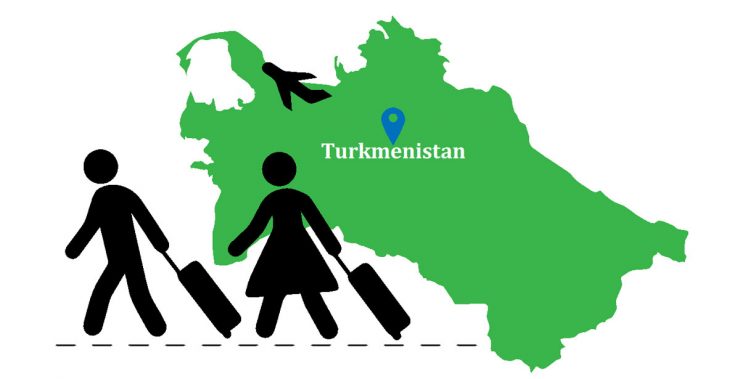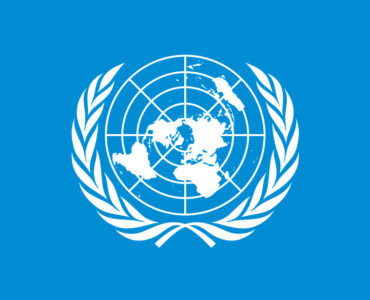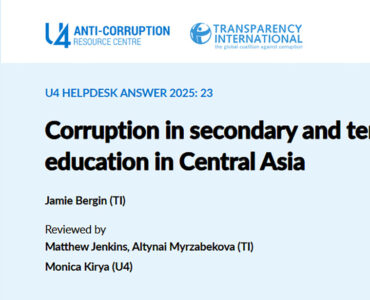From 1990-2017 over 1.6 million citizens of Turkmenistan decided to move and settle abroad. While majority moved in search of better opportunities, some were forced to relocate due to prosecution and fear. In 1990s Russia was the top destination country for Turkmen refugees. However, countries in Western Europe and North America became much more attractive in recent years. Of those who were forced to relocate, 65% were working age population and majority were women (57%). And while number of refugees seem to be small, it is still unfortunate that around 1,500 of Turkmenistan’s citizens are forced to leave their home country every year.
Since the government of Turkmenistan does not publish any statistics on migration, the author used publicly available data from the United Nations websites. The author tried to make educated conclusions based on this available information, which might not be complete.
How many Turkmens have emigrated and where have they moved?
As the UN Population Division reports, from 1990 to 2017 in total of 1,678,083 (UN database) people have emigrated from Turkmenistan. Over 93 percent of them settled in European countries. If we take the population size from 2017, which is 5,757,669 according to the World Bank, at least 29% of country’s population have relocated to foreign countries. Of these people, 98 percent decided to move abroad voluntarily, in search of better opportunities and living standards. The below chart illustrates the total number of migrants from Turkmenistan and the top regions they moved in to. As the data suggests, from 2000 to 2017 the number of Turkmens choosing to emigrate increased by almost 9 percent.
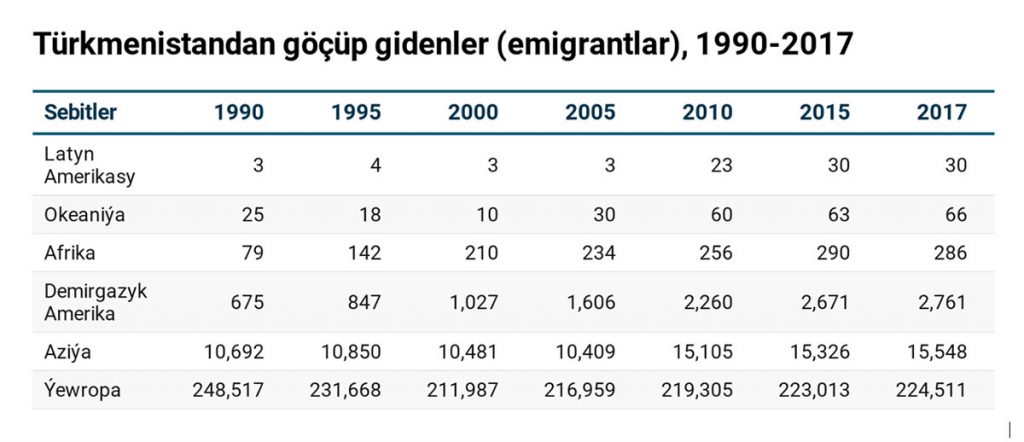
Source: Created by author using data from UN Population Division
How many Turkmens have been forced to relocate and where have they moved?
Based on the available data from UNHCR from 1994 – 2019, there were 20,865 refugees and 7,686 asylum seekers from Turkmenistan. This means that less than 2 percent of people who have emigrated from Turkmenistan were forced to do so.
A refugee is someone who was forced to escape their country due to persecution, war or violence. Persecution might be related to the person’s race, religion, nationality or political views. Refugee is a status that provides legal protection under the international law. People who have applied for but were not yet granted a refugee status are called asylum seekers.
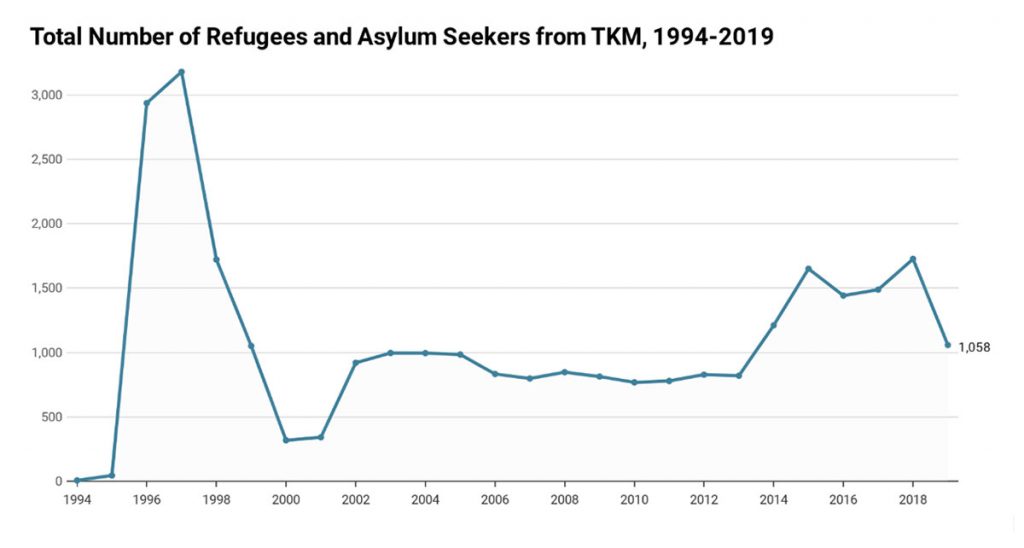
Source: Created by author using data from UNHCR
The peak for refugees was in 1997 when 3,179 citizens of Turkmenistan sought shelter abroad. After that, there was a drastic decrease reaching its lowest point in 2000 with 319 refugees. The average for the past five years, from 2015-2019, shows that 1473 Turkmens had to abandon their country every year.
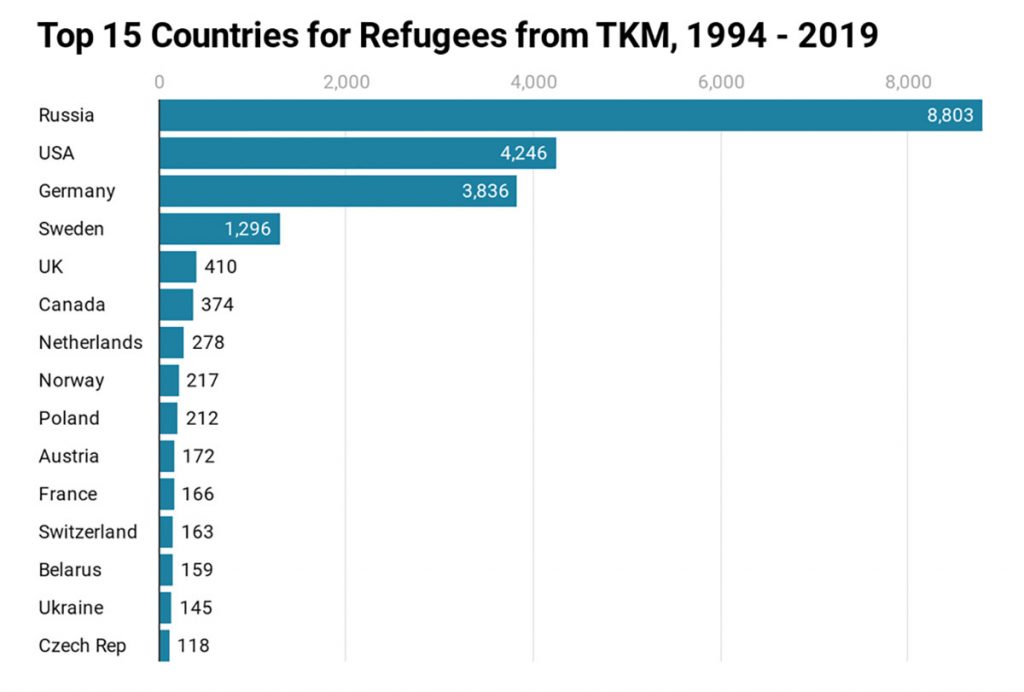
Source: Created by author using data from UNHCR
Donate to support Turkmen analysts, researchers and writers to produce factual, constructive and progressive content in their efforts to educate the public of Turkmenistan.
SUPPORT OUR WORKAs the above chart illustrates, Russia received the largest number of refugees from Turkmenistan. However, it drastically decreased over time, dropping from 2,882 people in 1996 to 12 people in 2019. This huge decrease (99%) can be observed in the chart below.

Source: Created by author using data from UNHCR
Since Turkey is among the few visa-free countries, a lot of Turkmen citizens go there as work migrants. However, only few seek asylum there. For example, from 500,000 Turkmen migrants in Turkey only few hundred asked for asylum. The below chart summarizes the top five destination countries for asylum seekers from Turkmenistan. As you can see, from 2000s the Western Europe, Turkey and USA became much more attractive destination for Turkmen migrants than Russia.
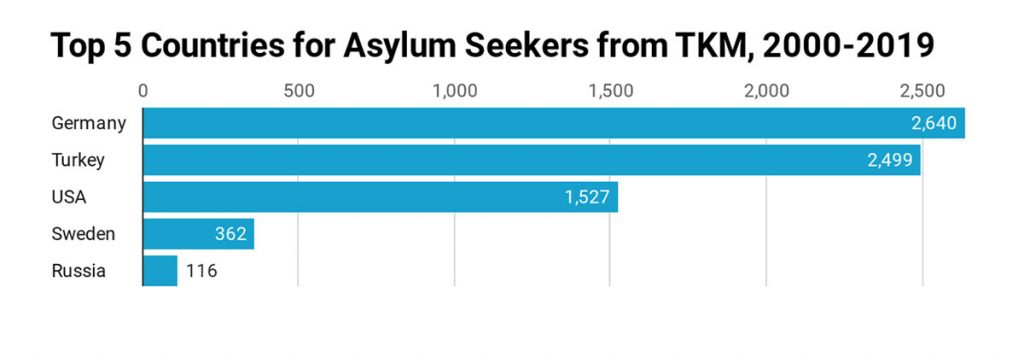
Source: Created by author using data from UNHCR
Who exactly is leaving Turkmenistan?
Disaggregated data by gender and age is only available for 7,430 of refugees from Turkmenistan. According to these statistics, there were more women (4,249) than men (3,181) who were forced to relocate. Turkey was the top destination country for refugees of both genders, with Western European countries following the lead.
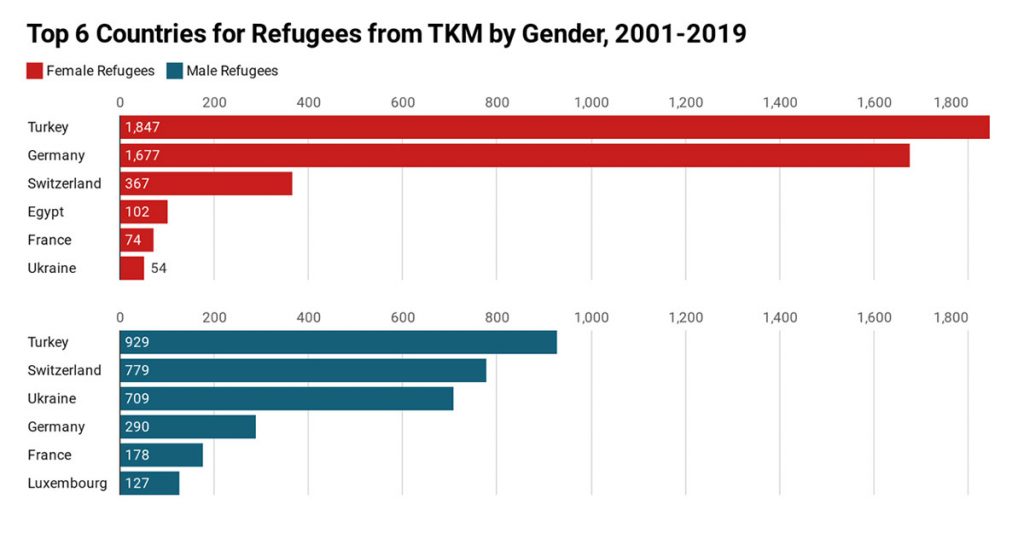
Source: Created by author using data from UNHCR
In terms of age category of refugees 65% of them were between 18-59 years old. If the same is true for the whole migrant population of Turkmenistan (over 1.6 million), this is bad news for the Turkmen economy and the future of the country because it is losing a big chunk of its working age population.
During 27 years (1990-2017) over 1.6 million citizens of Turkmenistan moved and settled abroad. Majority of them moved in search of better opportunities while some had to relocate due to fear of prosecution. Russia was the top destination country for Turkmen refugees in the 1990s but from 2000s the Western Europe and North America became much more attractive. The 65% of those who were forced to relocate were working age people and majority were women (57%). While the number of people fleeing Turkmenistan is relatively small, it is still sad that near 1,500 of country’s citizens are forced to leave their home every year.
In your opinion, why do people choose to leave Turkmenistan? What are they looking for? What are the main three reasons?

